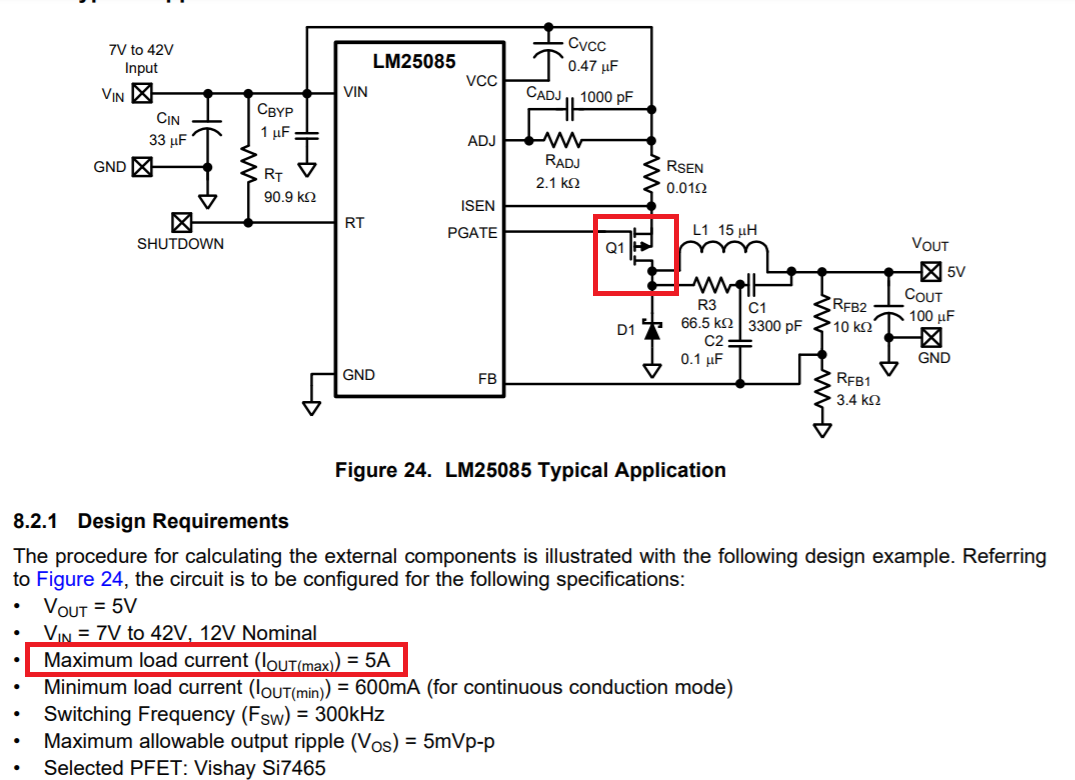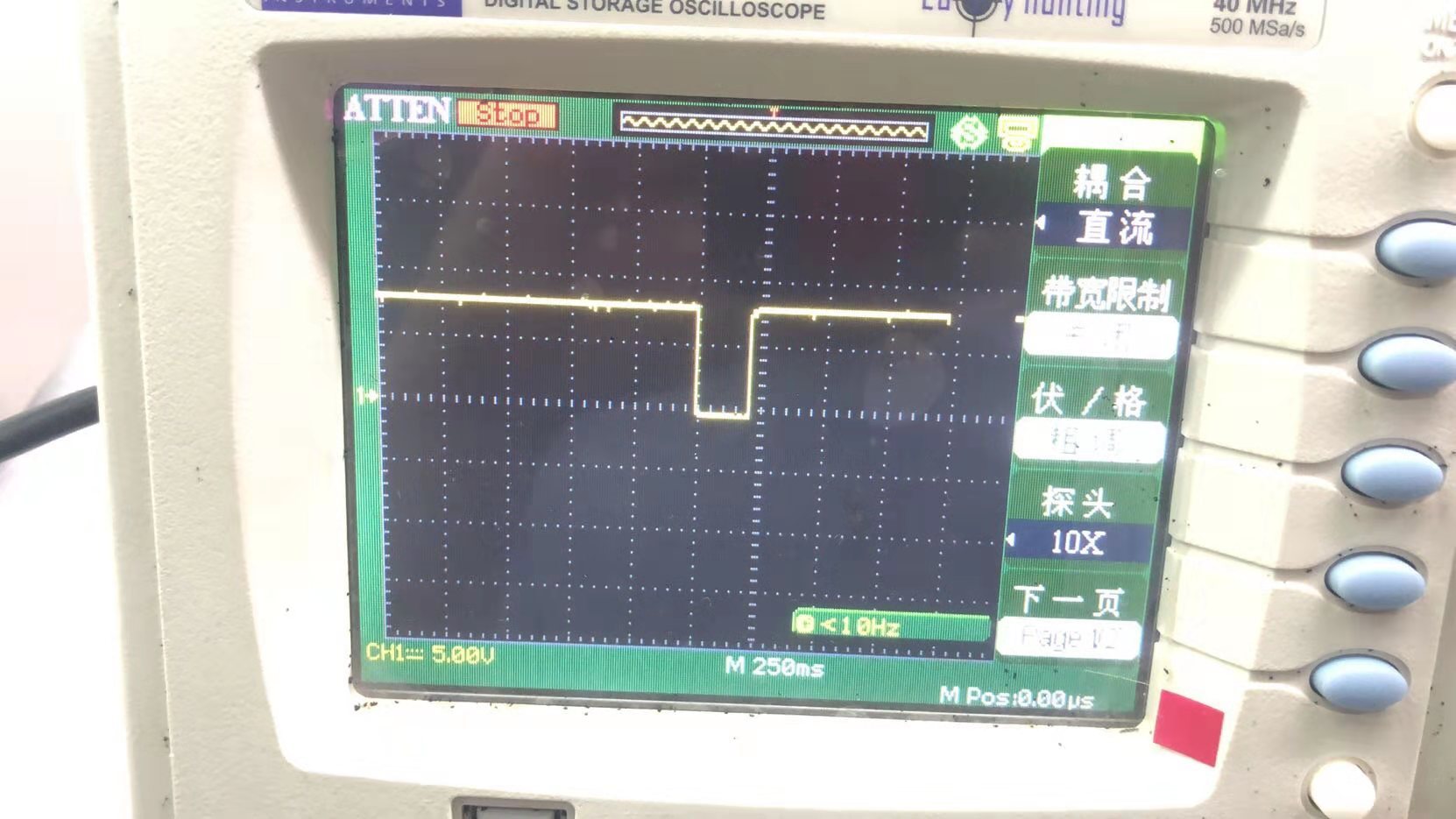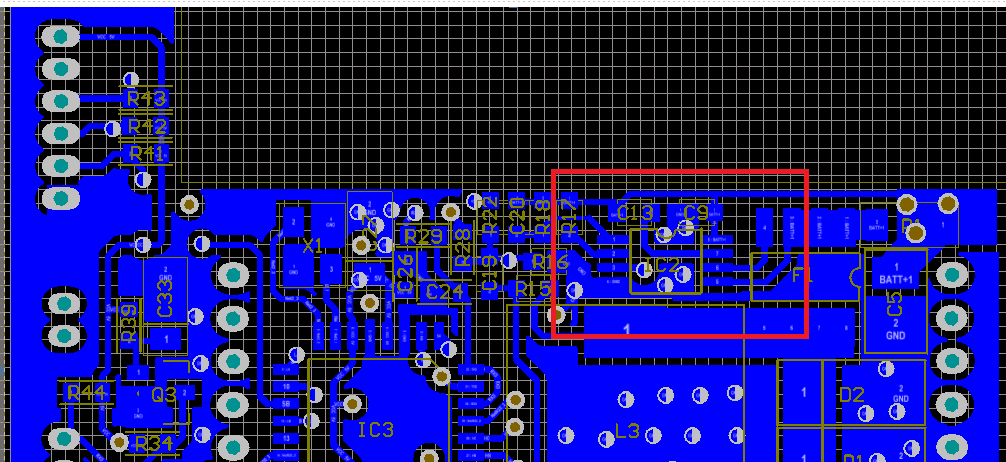Hello
A customer said if the LM25085 output current exceeded 5A, the output voltage will drop. i will get more detailed information to you, but I have a question about its maximum output current if it's depended on the MOSFET Q1 in the picture from the datasheet., instead of the constant 5A. The output voltage wave is as following.
let's discuss the phenomenon.Background :VOUT=8.4V, VIN=25V, electronic load =8A
1.LM25085 output 8.4V drop to 0 for 250~300ms when input voltage is 25V.
2.The output current is 8A. This phenomenon appears after it works normally for 40s.
3.The output current is 5A. This phenomenon appears after it works normally for 3 mins.




